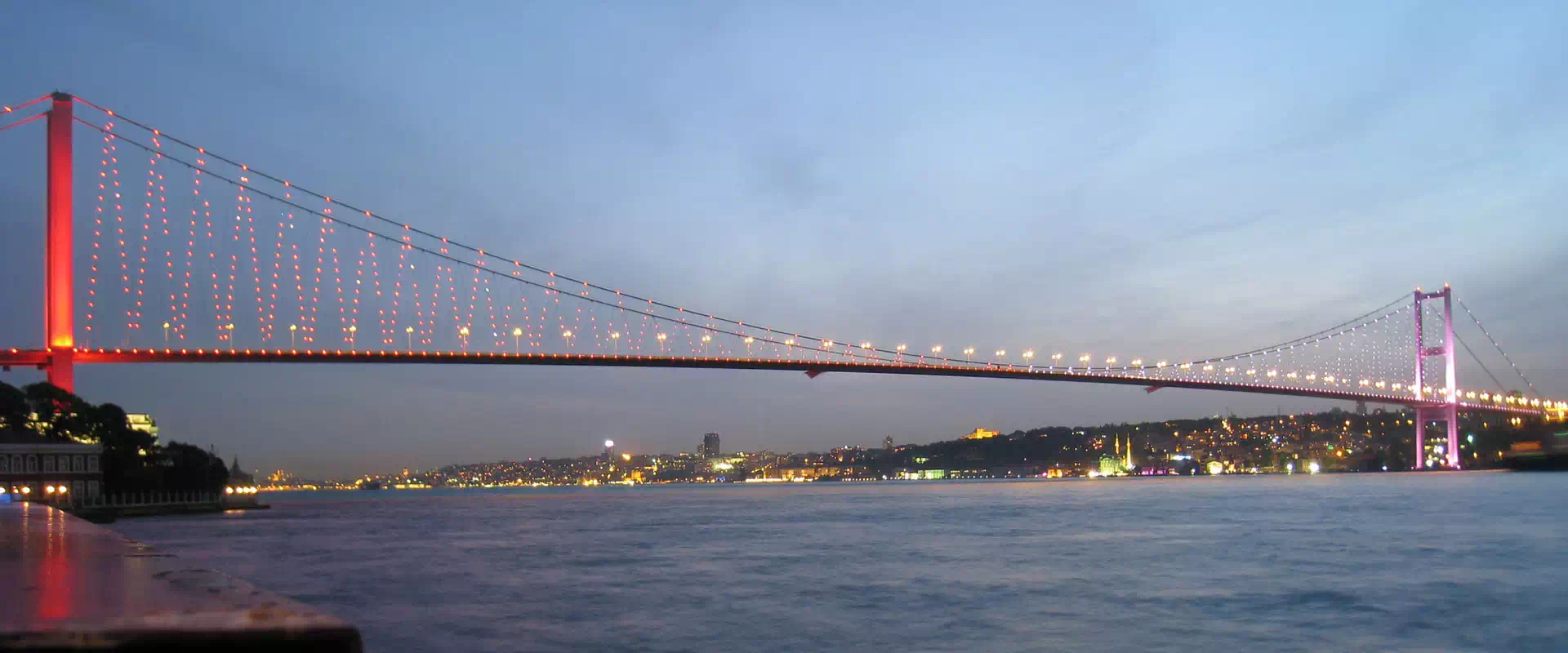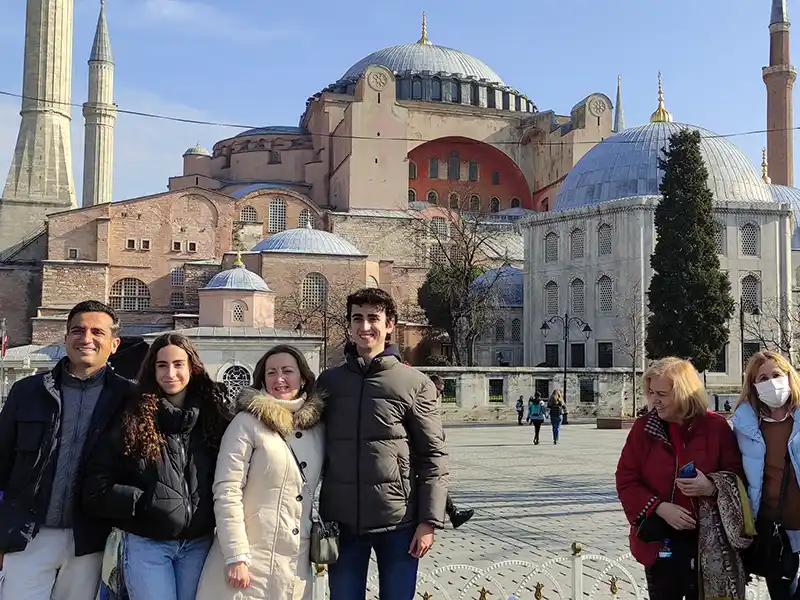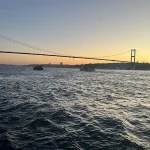Places to See in Istanbul
One of the most important cities in the world for about 16 centuries, Istanbul was ruled under the domination of many different civilizations. Dozens of historical artifacts in the city, which bears the traces of all the civilizations it has hosted on its lands, have turned Istanbul into a museum in itself.
The places to visit in Istanbul, where you can encounter a different beauty in each district, do not end with counting. Many natural and historical destinations, especially palaces, mosques, museums, parks, and gardens, are among the must-see places.
Hagia Sophia
There are many places that we can put at the top of the list of places to visit in Istanbul and it is very difficult to choose, but Hagia Sophia deserves to be in the first place. Hagia Sophia, built-in 360 by the Eastern Roman Emperor Constantius, is one of the oldest cathedrals in the world.
In the 5th century, the building was named Hagia Sophia and it was named after Istanbul until 1453. After conquering Istanbul, Fatih Sultan Mehmet ordered Hagia Sophia to be a mosque and the minarets of the building were built by Mimar Sinan. Hagia Sophia, which became a museum in 1935, was reopened for worship in 2020.
Topkapi palace
Topkapi Palace, located in the Historic Peninsula, which is the most touristic region of Istanbul, should of course be at the top of the list of places to visit in Istanbul. Located in Sarayburnu in the Fatih district, Topkapı Palace was built after the conquest of Istanbul and served as the administrative center of the Ottoman Empire for 400 years.
Topkapi Palace, which was turned into a museum on April 3, 1924, is also the first museum of the Republic of Turkey. It is one of the largest palace museums in the world, as it covers an area of 300,000 square meters and hosts approximately 300,000 archival documents.
Sultanahmet Square (Hippodrome)
Sultanahmet Square is the starting point of touristic tours in Istanbul. At the same time, touristic Sultanahmet hotels are located around this square. The square, which was used as a hippodrome during the years when the Roman Empire ruled the region, was also a hippodrome when it was under the rule of the Byzantine Empire. That’s why it was known as Horse Square.
In those days, the local people always gathered in this square and had fun. Obelisks, the remains of which can still be seen today, such as the Obelisk, the Serpent Column, and the Knitted Obelisk were used to divide the hippodrome into two. Nowadays, they are among the most important elements of the photographs taken in Sultanahmet Square.
Sultan Ahmet Mosque (Blue Mosque)
The Blue Mosque, the most famous mosque in Istanbul, is very famous not only among domestic tourists but also among foreign tourists. Foreign tourists know the mosque as the Blue Mosque, which means Blue Mosque. The most important reason for this is that the interior of the mosque is furnished with 21 thousand 43 Iznik tiles and has a deep blue appearance.
Basilica Cistern
Basilica Cistern, one of the most valuable structures remaining in Istanbul from the Byzantine Empire period. The cistern, which was built on the order of Emperor Justinian in 532, was used for the water needs of the palace and the people in those years. Even after the conquest of Istanbul, it continued to be used as a water source for a while.
In the past, it was also known as the Basilica Cistern because of the Stoa Basilica on the cistern and the Basilica Palace because of the columns coming out of the water. The most mysterious artifact in the Basilica Cistern, which is 140 meters long and 70 meters wide, is the Medusa Head. The statue, located under the two columns located in the northwest of the cistern, is one of the most important works of the Roman Period, but how it got here is unknown.
Grand Bazaar
Among the places to visit in Istanbul, the Grand Bazaar is the place where you can find all the textures of Turkey together. The bazaar in Beyazıt is known as the Grand Bazaar by foreign tourists. The Grand Bazaar was built during the reign of Mehmet the Conqueror and has been in existence for about 550 years.
The bazaar, which aimed to increase the income of the Ottoman Empire when it was first opened, has grown over time and has become the most important trade center in the region. The Grand Bazaar, the oldest shopping center in the world, is also one of the largest shopping centers in the world, with an area of 45,000 square meters.
Home to almost 4000 shops, the Grand Bazaar is famous for its jewelers. Besides the jewelers, there are also spices, carpets, rugs, and fabrics. Even if you are not going to buy anything from the Grand Bazaar, you should definitely wander through the shops because it would not be possible to go back without feeling the nostalgic atmosphere of old Istanbul.
If you want to visit the Ottoman and Byzantine historical heritages in Istanbul Sultanahmet square with a local guide, the best tour we recommend Istanbul Ottoman And Byzantine Heritage Tour.
Galata Tower
Galata Tower, one of the structures that make up the silhouette of Istanbul, welcomes so many tourists that there are always long queues in front of it. Galata Tower, which is among the oldest towers in the world, was built in the 500s at the request of the Byzantine Emperor Justinian.
It gained its present appearance in the 1340s. The last repair of the tower, which was destroyed by fire and earthquakes, was made in 1967. When you get to the top, you will encounter a wonderful view of Istanbul and you can take the most beautiful Istanbul pictures at this point.
Maiden’s Tower
Another structure that forms the silhouette of Istanbul is the Maiden’s Tower. The tower, which is one of the most romantic addresses in Istanbul, is located in Salacak offshore of Üsküdar district. There is no clear source of exactly when the Maiden’s Tower was built, but in some sources, it is said that the construction process started in 341 BC.
The Maiden’s Tower, which is the subject of many different legends, was also known by the names Damalis and Leandros in the past. Damalis was a name derived from the wife of the King of Athens, Kharis. This name was given to the tower because Damalis was buried on these beaches when he died. During the Byzantine Empire, it was also known as Arcola, which means small castle. After the conquest of Istanbul, the tower on the island was demolished and a wooden tower was built in its place. The tower, which could not withstand fire due to its wooden structure, was rebuilt in 1725.
Maiden’s Tower, which has been used for purposes such as tax collection from ships, defense, a quarantine hospital, and a radio station throughout history, is one of the first places that come to mind for romantic dinners and marriage proposals.
The Egyptian Bazaar
After the Grand Bazaar, the Spice Bazaar is the place that best reflects that old Istanbul atmosphere. When it was built in the 17th century, it was one of the centers of trade in the Ottoman Empire. Since it was built as a part of the New Mosque, it was also called Yeni Çarşı and Valide Çarşısı in the early years. Later, it was given its current name with the sale of spices and teas from Egypt.
Dolmabahçe Palace
This palace, where Mustafa Kemal Atatürk passed away, has a great place in the hearts of the local people.
Dolmabahçe Palace was built in 1856 upon the order of Sultan Abdülmecit. Abdülmecit wanted this palace to have a European style and to consist of only beauties. The construction of the palace, which includes 285 rooms, 26 halls, 6 baths, and 68 toilets, was very expensive for the sultan and the sultan was able to sit in the 3rd largest palace of Istanbul, which he had built with such care, for only 5 years. The palace, which was used in different ways by the sultans who came after Abdülmecit, also served as the modern face of the new state when the Republic of Turkey was established.
On November 10, 1938, Mustafa Kemal Atatürk passed away in room 71. Today, when you go to Dolmabahçe Palace, you can see this room and personal belongings of Atatürk.
Beylerbeyi Palace
Sultan Abdulaziz wanted a summer residence for the sultans to be built right across the sea and ordered Sarkis Balyan to build the Beylerbeyi Palace. After the palace was built, important names such as the German Emperor and the Queen of France were hosted here.
While its exterior is designed in accordance with the Baroque understanding, the interior design reflects the effects of Sultan Abdulaziz’s love for the navy.
Especially the garden design is worth seeing.
Kucuksu Pavilion
Sultan Mahmut I had a wooden mansion built on the shore of Göksu Stream in 1752. This mansion has been the residence address of the sultans at the promenade for years. However, when the mansion was made of wood, it was worn out over the years. Sultan Abdülmecit had the mansion restored and the Küçüksu Pavilion built.
Küçüksu Pavilion, which was built with an understanding suitable for western architecture, is located in Beykoz and is also known as Göksu Pavilion.
Hagia Irene Church
There are many places left from the Byzantine Empire among the places to visit in Istanbul, but Hagia Irene Church is the first church built by the Byzantines in Istanbul. After the conquest of Istanbul, the church was not converted into a mosque and it was decided to become a museum in the 19th century. The church, called the Museum-i Hümayun or the Imperial Museum, was the first museum that opened in the Ottoman Empire.
Eminonu
It’s time for you to experience the atmosphere of Istanbul in the best way possible. Eminönü is one of the most famous districts of the city. Eminönü, where you can always see a crowd of tourists, is surrounded by the Rüstem Pasha Mosque and the Süleymaniye Mosque. Located within the borders of the Historic Peninsula, the district also hosts many places that we have added to our list of places to visit in Istanbul. In other words, you inevitably fall on your way to this district.
Rumeli Fortress
Before conquering Istanbul, Fatih Sultan Mehmet wanted to close the possible aid channels of the Byzantine Empire. In 1452, he thought that there might be aid ships that could come to Byzantium via the Black Sea and had the Rumeli Fortress built. In the construction that started in March, 300 masters and 800 workers worked together.
The fortress, which has 3 towers, is located exactly at the point where the two sides of the Bosphorus are closest to each other, right across Anadolu Hisarı. For this reason, it is also known as Boğazkesen. After the critical role it played in the conquest of Istanbul, Rumeli Fortress did not matter much and was forgotten. Cannons and cannonballs used during the conquest are exhibited in the Rumeli Fortress, which can be visited as a museum today. Outdoor concerts are also held here.
The most beautiful Bosphorus pictures can be taken from this point in front of the magnificent view of Istanbul.
Ahrida Sinagogu
Jews living in Spain and Macedonia in the 1400s immigrated to Istanbul and moved to Balat. A large Jewish community was established here and the Ahrida Synagogue was opened. This synagogue is the oldest and largest synagogue in Istanbul.
Ahrida Synagogue, which has been open to worship since the day it was opened, has a prayer platform called Tawa. The shape of this lectern is likened to a ship. It is thought that the reason why it was built in the form of a ship is to remind us of Noah’s Ark and the ships that carried those who came to live in our lands from Spain.
Balat
Balat is a district located between Ayvansaray and Fener, on the Golden Horn coast, in the Fatih district of Istanbul. Balat is considered one of the oldest settlements of its region in terms of history. For this reason, it offers its visitors various artifacts from different periods and cultures.
Its important historical structure includes the Fener Greek Orthodox Patriarchate, the Historical Küçük Mustafa Pasha Bath, the Balat Culture House, and the Staircase Hill. It is one of the must-visit places in Istanbul.
Balat is one of the most important districts of Istanbul, which has been included in the UNESCO’s World Cultural Heritage List.
Istanbul Archeology Museum
These museums, consisting of the Ancient Orient Museum, Archeology Museum, and Tiled Kiosk Museum trilogy, will be enough to fill you with history. Millions of historical artifacts from various cultures are waiting for you.
Important Artifacts of Istanbul Archaeological Museum: King of Sidon, Alexander’s Tomb (Alexander Sarcophagus), Crying Women Tomb (Mourning Women’s Tomb), Satrap Tomb, Lycian Tomb, Tabnit Tomb, Siloam Inscription, Sidamara Tomb, Roman Empress statue in Pudicitia Magnificent works such as the Egyptian-Hittite Peace Treaty are exhibited. Sculptures of many pagan gods such as Zeus, Demeter, Aphrodite, Artemis, Hera, Apollo, and Eros are located in the museum.
Istanbul Bosphorus
When you talk about places to visit in Istanbul, it is impossible not to mention the Bosphorus.
In addition to historical features, unique natural beauties stand out as an important element in the formation of Istanbul’s fascinating ambiance and beauty. The fact that it separates two continents from each other and is a very important place in the international sense makes the Bosphorus an important element. Experiences, historical buildings, and landscapes in the deep blue waters of the Bosphorus have helped Istanbul take on a completely different state.
There are many historical buildings in the Bosphorus that you can see and photograph while a Bosphorus Cruise. We have listed some structures in the Bosphorus below for you;
- Maiden’s Tower
- Çırağan Palace
- Dolmabahce Palace
- Ortaköy Mosque
- Rumeli Fortress and Anadolu Fortress
- Galatasaray Island
- Kuleli Military High School
- Küçüksu Pavilion
- Beylerbeyi Palace





